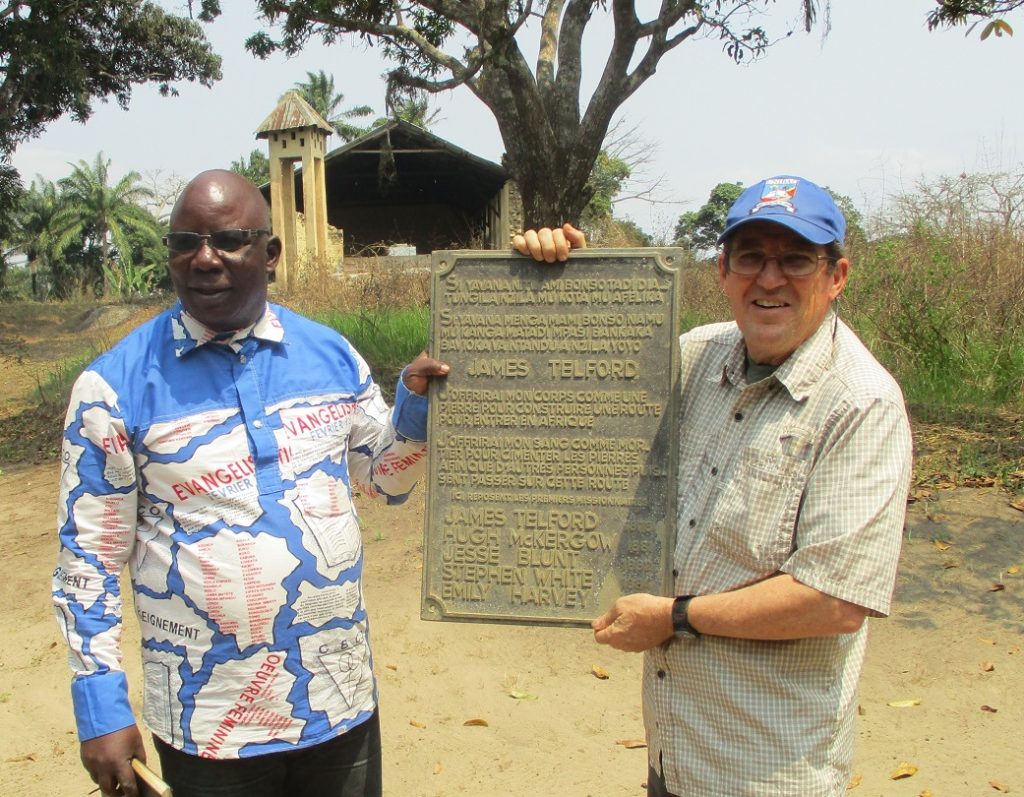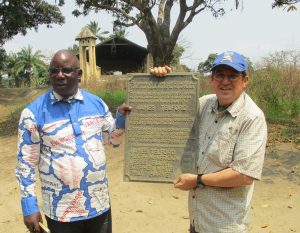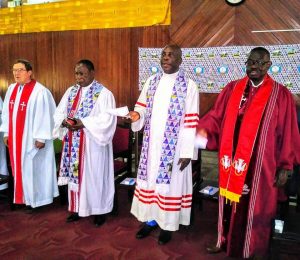
Dear Friends,
Last month, I made a pilgrimage to the little village of Pala Bala.
In 1877, journalist and explorer Henry Morton Stanley arrived back in Europe, having found the missionary David Livingstone, who had been considered lost in Central Africa. Stanley, after spending some time with Livingstone, went down the Lualaba river, mistakenly thinking that it was the headwaters of the Nile. Instead of the Nile, Stanley spent almost three years going down the river known today as the Congo River, all the way to the Atlantic Ocean. He described an immense and beautiful land.
While many had visions of the economic opportunities that this land provided, others were inspired by the huge population who lived in ignorance of the love of God proclaimed by Jesus Christ. A mission organization was hastily put together called the Livingstone Inland Mission with the vision of building a network of church centers into the interior of Africa along the river, retracing Stanley’s trip.
The first missionaries of the LIM arrived at the mouth of the Congo river in 1878. Inland from the Atlantic Ocean is a 220-mile stretch of the Congo river that is not navigable, because of a series of rapids. To get around this non-navigable stretch of the river, a series of church centers had to be built in order to reach “Stanley Pool” at present day Kinshasa. From there, the river is navigable for 1,000 miles into the heart of Africa.
The first stepping stone inland around the rapids was built at a village called Pala Bala. Up on the top of the mountain out of the river valley is where the first LIM missionaries established their first site.
In 1878, just months after his arrival in the tropics, a young missionary by the name of James Telford became the first person from LIM to die from disease. Before he left Europe for Africa, James Telford said: “I offer gladly my body as a stone to pave a way for entering Africa. I offer my blood as mortar to cement the stones that others may follow after me.” (My paraphrase from French.)

In the photo, I am with Pastor Makonko, who accompanied me on my pilgrimage to Pala Bala. We are holding the plaque that honors the missionaries who are buried there. The artwork in the other photos is on the monument marking the tomb of the missionaries. In 1878, the missionary is depicted as the teacher. The 1978, centennial celebration depicts the Congolese as teachers.
After seven years, the LIM had grown so rapidly that they needed to find a mission organization with more experience to move the work forward. In 1884, the work begun by LIM, including their missionaries, were taken over by the ABMU (American Baptist Missionry Union). The ABMU later became the American Baptist Foreign Mission Society (ABFMS). Today, the ABFMS is known as “International Ministries.”
The Baptist Community of Congo (C.B.CO) marks the arrival of the first LIM missionaries at Pala Bala in early 1878 as the birth of the Protestant work in Western Congo. A huge celebration was held during the summer marking the 140th anniversary of the church work. I was invited to speak about the work of the missionaries in the past and continuity into the 21st century.
How do you summarize 140 years of work in a few minutes? I simply recalled some of our oral and written traditions. I talked about historical places such as Pala Bala, and Mbanza Manteke, Sona Bata, and Kintambo. I also spoke of the heroes of the faith, both missionary and nationals who have become our cloud of witnesses to motivate us into the future. I also talked about the vision of International Ministries as an example of establishing priorities that are in keeping with a contemporary mission vision. See our vision statement: https://internationalministries.org/vision/
It was good to visit Pala Bala and to reflect on those who helped make a way for the rest of us to dwell in the center of Africa.

It was good also to attend the the 140th anniversary of the birth of the Baptist Congregation that we work alongside. The thriving vibrant Baptista community in Congo is testimony that the sacrifices of the heroes of the faith in this central African land has not been in vain.